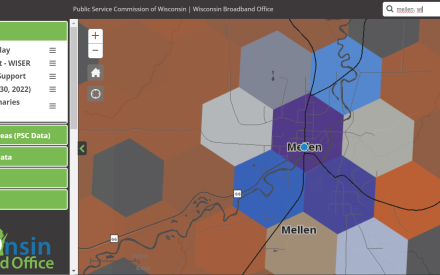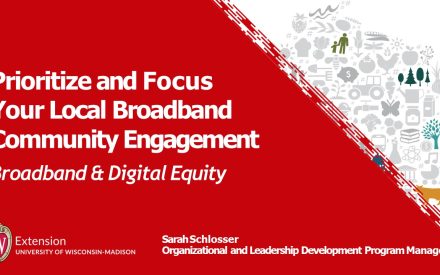What is Internet Adoption?
Is your county including ALL citizens in its broadband planning? Those of us who are actively working to get broadband to all communities of Wisconsin frequently talk about the 3 A’s of broadband: Access, Affordability, and Adoption.
3A's of broadband

While Access or getting infrastructure built to enable you to connect to the internet is the most pressing issue at the moment, I would ask if you are considering ALL of your local residents in your planning efforts. The old catchphrase “build it and they will come” does not work in the instance of broadband. Why not? To begin with, many people are unable to afford broadband on a sustainable basis.
In 2022, Consumer Reports conducted a nationwide survey of 21,000 consumers’ broadband bills and found that the median monthly internet bill was $74.99. Studies have shown that rural areas, in particular, have the highest broadband pricing and a recently completed analysis from a consultant for the Wisconsin Public Service Commission showed that monthly internet pricing in rural areas is 15% higher than in urban areas. So, on the pathway to adoption, one critical goal becomes making broadband affordable for ALL consumers.
Putting it into Practice
A good way to find out how many people are subscribing to broadband in your area is to find out the take rate (subscription rate) from local internet service providers (ISP’s). That is useful information for your area. Some questions to think about:
- What percentage of people subscribe to and do not subscribe to broadband in your community?
- What are the reasons for not subscribing?
- Is it because they can’t afford it?
- Is it because they don’t have digital devices to connect to the internet?
- Do they lack the digital skills (know-how) to use those devices?
These are some questions of digital adoption, the third A. The higher the adoption rate, the greater the return on investment for an ISP and the greater the boost to the local and state economy.
Internet adoption is about getting ALL people connected (except for the very few who choose otherwise). This last A is hard because it comes with the necessary additional task of teaching digital skills to those without. Yet, it is our responsibility to complete the job of adoption. At present, libraries are a useful resource to learn digital skills because they are ubiquitous, are served with reliable internet, are trusted by the public, and often have additional computer terminals and staff that know how to use a computer.
Increasingly, organizations and counties nationwide and in Wisconsin are considering hiring individuals who are good teachers of digital skills. Besides libraries, nonprofits such as United Way and Wisconsin Literacy, recognizing the social and economic value of teaching people digital skills, have created and funded positions to do exactly that. Wisconsin Literacy’s tutor-trainer is Madison-based, and the United Way has people in the Milwaukee area and in Eau Claire who are involved in teaching digital skills to people. Forest County is an example of a rural county that has hired a person to teach digital skills.










 What's Next in Wisconsin Broadband, November 2025 -
What's Next in Wisconsin Broadband, November 2025 - Broadband Expansion in Wisconsin: Case Studies - Page 3
Broadband Expansion in Wisconsin: Case Studies - Page 3


